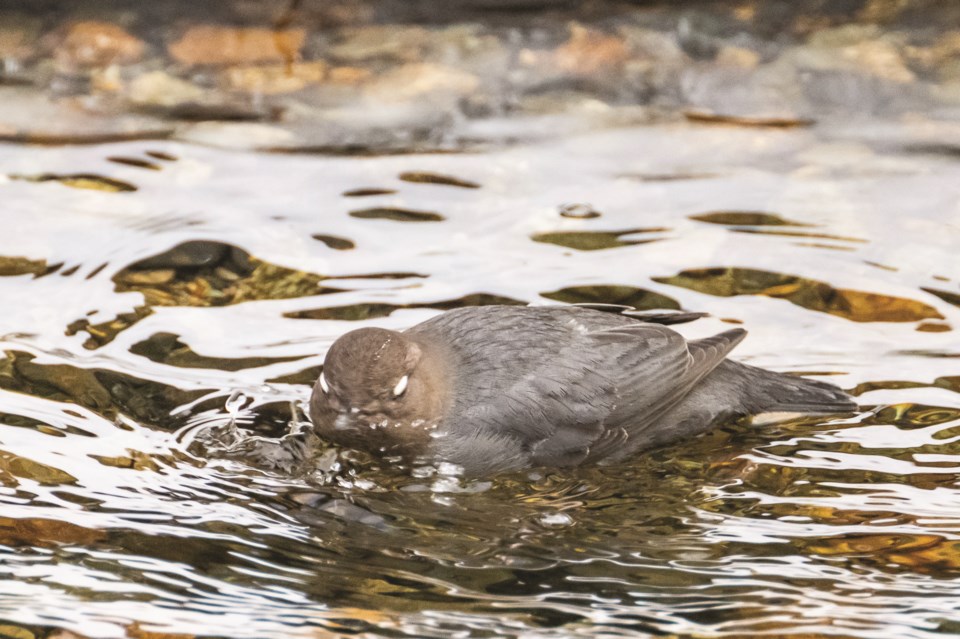Like so many others during COVID, my husband and I spent hours walking the Valley Trail, often up to Green Lake and the spit of the Fitzsimmons Creek delta.
One day in November 2020 I was looking at the outlet of Fitzsimmons Creek into Green Lake when I saw something my eyes couldn’t quite reconcile: a bird that was about the size of a robin, all grey, diving and swimming under water. When it popped up on land, I observed it to have toes and claws like a robin rather than the webbed feet I associate with aquatic birds. I was baffled.
When we got home I wasn’t sure how to identify this mystery bird so I used Google, entering the search term “swimming crow.” The American dipper immediately popped up.
The American dipper is actually a songbird. Its song is a great way to locate it as it resonates over the rock-strewn streams the dipper populates. Dippers can sing for up to 10 minutes straight.
The dipper is the only North American songbird that swims underwater, hunting for aquatic larvae, worms, fish and other small prey. Dippers are incredibly buoyant by nature, so they counteract this by swimming towards the bottom of the fast-moving streams where they hunt. They also use their toes and claws to grip the bottom of the streams and walk along the bottom.
The American dipper is also the only songbird that sheds old, worn feathers to replace them with new ones (molts), again behaving more like a waterfowl. This actually renders it flightless until the feathers regrow.
Dippers have a number of adaptations that let them survive in frigid mountain water. They have 4,200 feathers compared to 3,000 for the similarly sized Robin. They also waterproof their feathers when they groom them using their beak (preen) by spreading a waterproof oil. They have a nostril flap that closes while underwater to prevent cold water from entering the nasal passages. They also use their third transparent eyelid (nictitating membrane) as a goggle allowing them to protect the eye from the cold while still seeing underwater.
Speaking of eyelids, the dipper’s blink when on land reveals a feathered white eyelid. This is commonly mistaken for the third eyelid. The reason it is white is not known, perhaps to make this otherwise drab bird that blends into the rocks more visible to mates. They blink more slowly than other birds as well, so this is as good a theory as I can come up with.
The dipper is named for its trademark dipping or bobbing while perched at the side of the stream. Again, no one knows why they do this, but it is theorized it is done to increase their visibility. Whatever the reason, it is entertaining to watch.
Dippers can be spotted in lots of places in Whistler. This year on the Christmas Bird Count one was found swimming in a stream on the Blackcomb Glacier! They tend to nest under bridges, so this is always a great place to look. Right now, the best place to go dipper watching is at the bottom of Lorimer Road from the bridge over the River of Golden Dreams. Bring a set of binoculars. If a dipper is sitting at the stream’s edge they are very easy to overlook when they aren’t sharing their brilliant song.
Naturespeak is prepared by the Whistler Naturalists. To learn more about Whistler’s natural world, go to whistlernaturalists.ca.




